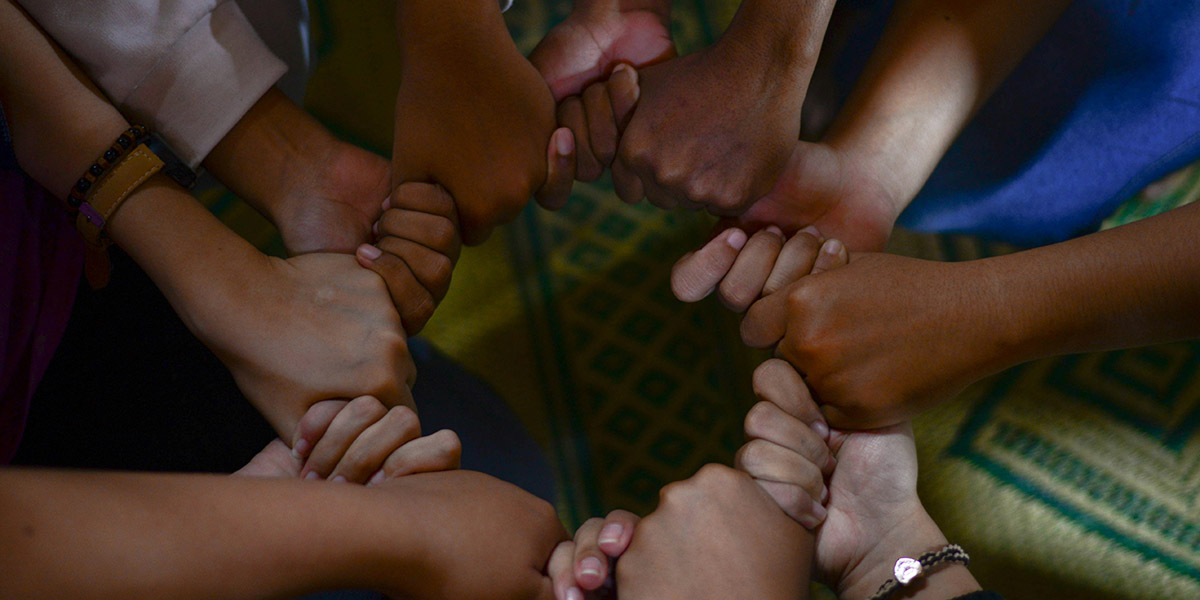Human-centered design has dominated virtually every sector in the past few years, to the point where some are positing that it’s over-saturated the job market. I wrote about “late-stage UX” in my last article and how the best opportunities for UX professionals right now might be within the government, an entity that by design is often years behind the private sector. Adding to the differences between private and public sector UX is the audience we are beholden to and how we can best serve them. I have seen human-centered design (HCD) fall short at times in both sectors, and as a result, I would like to advocate for “humanity-centered approaches” in lieu of “human-centered design.”

The Nielsen-Norman Group (NNG) popularized the term “humanity-centered” several years ago, but in essence, “humanity-centered” shares four core principles with “human-centered” and adds a fifth. Humanity-centered:
- Focuses on the entire ecosystem of people, all living things, and the physical environment.
- Solves the root issues, not just the problem as presented (which is often the symptom, not the cause).
- Takes a long-term, systems point of view by realizing that the impact of our actions on society and the ecosystem can take years to appear or manifest even decades later.
- Continually tests and refines the proposed designs to ensure they truly meet the concerns of the people and ecosystem for whom they are intended.
- Designs with the community, not for them.
Another thing that’s worth mentioning here is the use of the word “design.” As UX professionals, we live and breathe tangible solutions but taking a humanity-centered viewpoint means accepting that a “solution” may not always be possible (nor warranted). For this reason, I’d argue that we as practitioners should look at our efforts in terms of “approaches”, to emphasize the entirety of the process, instead of “designs” which generally equate to the determinate output(s) of a specific solution. The reality is, we may not come up with a solution because a solution isn’t possible. Therefore, advocating for a “humanity-centered approach” keeps the door open to be ok with not solving the problem instead of a “human-centered design” which implies an artifact, a tangible deliverable, a final solution.
So how can we do this and stay true to the spirit of NNG’s “humanity-centered” framework? There are several key things I suggest doing.
- Widen the lens of what is being worked on through approaches that include service design. Go beyond the digital component and extend to frontstage, backstage, systems and even non-technical approaches, needs, actions and outcomes. Technology isn’t always present, nor should it be.
- Consider unhappy, as well as unknown paths because the happy path is easy. What happens when things go wrong? How will the experience impact the audience? How might issues manifest to others not like us? How can we help others when things go awry? Should we even be involved (ie, is it our place to do so?)
- Consider the footprint of the solution and how much it deviates from what is already available as well as how it will absorb new resources. Will change create waste? Will it add additional energy and stress?
- Who have we not been thinking about and what unique needs do they have? Specifically those from marginalized communities and groups which includes those with accessibility needs/concerns. As mentioned above, are we the right people to solve the problem or are we trying to feed our own egos?
- It’s better to move slowly (and even scrap something that won’t work) than to rush out ill-conceived quasi-solutions and fail. The government isn’t a startup and shouldn’t be run as one. When services and applications fail in the public sector, lives can be severely impacted. For this reason, we must advocate for a measured approach that minimizes problems along the way and helps prevent less-than-optimal solutions from going live. And that may mean pulling the plug before launch if things aren’t going well.
It’s easy to get caught in the trap of thinking everything deserves a “refresh” or a rethinking by someone who’s an expert in user experience but often that comes at the expense of thinking through the whole impact of change. The goal with humanity-centered approaches is to constantly assess (and reassess) our role, to tread carefully and to be good stewards for the world, and the communities around us. To that end, a humanity-centered approach would help all of us work towards a more humane world, which is why most of us got into human-centered design to begin with!
Emily Ryan has worked cross-functionally as a designer, full-stack developer and UX researcher to solve a variety of digital issues for public and private sector spaces, focusing on civic tech. She’s worked across start-ups, federal government and consulting agencies. She holds a BFA in Design, an M.A. in Criminal Law and is currently pursuing an M.A. in Government, focusing on technology’s influences and impacts on global democratic movements and free and open elections. In her free time she runs ultramarathons and travels, preferring locations with traditional European holiday markets, walking food tours and modern art exhibits.





Leave a Reply
You must be logged in to post a comment.